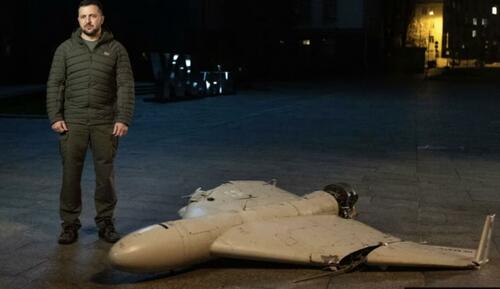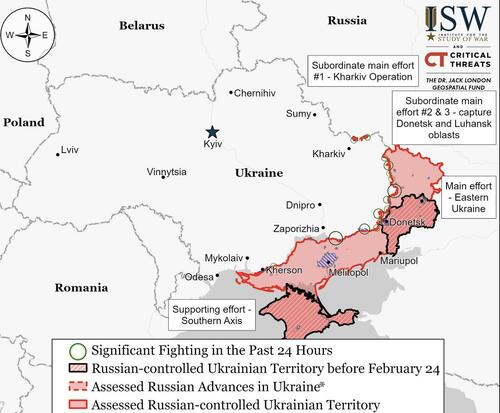The world's principal theater of evolving drone warfare has a new angle, as Russia is now using relatively cheaper unarmed drones to force Ukraine into revealing the location of its air defense assets.
The deceptive new drones, built from cheap materials including plywood and foam plastic, have been used in five Russian strikes over the past two to three weeks, Reuters has reported, citing Ukrainian intelligence official Andriy Cherniak. One version uses a camera and a mobile phone SIM card to send imagery to its operator.

In one of the foremost indicators of Russia's strengthening military relationship with Iran, a principal weapon in Russia's Ukraine-war arsenal is the Iranian Shahed kamikaze drone, which dives into ground targets and explodes.
While the new drones are built to duplicate the look of Shaheds, they generally don't carry explosives, though some are believed to have carried small charges. Unable to distinguish between the duds and the real thing, defending Ukrainian soldiers are compelled to open fire -- revealing their positions to the camera-wielding drones, which are typically mixed into swarms of bona fide Shaheds.
"They identify where our mobile groups are positioned, where the machine guns are that can destroy them. They're trying ... to get a picture of where all our air defenses are located," said Cherniak.
The decoy drones are cheaper -- relatively. Cherniak estimates that Russia's probably spending as little as $10,000 for each one. That's a fraction of the $30,000 to $50,000 that a real Shahed might cost. In addition to their value in revealing Ukrainian air defenses, the mock Shaheds also force Ukraine into expending precious ammunition.
US-supplied Patriot air defense missiles cost about $4 million each. Shooting them at $50,000 drone is a horrendous trade-off of resources. While the US Department of Defense was happy to make that kind of lopsided exchange to knock down Shaheds launched by Iran at Israel in retaliation for the IDF's attack on an Iranian diplomatic facility in Syria, Ukraine recognizes the need to economize -- and emphasizes using mobile teams armed with older types of anti-aircraft weapons, including machine guns.
Russia has been using drones to menace Ukrainian energy infrastructure. A Thursday night attack focused on two regions between Kiev and its Russian border, leaving more than 68,000 customers without power. The Ukrainian military claimed it knocked down 20 of 22 drones that night. Even if true, the math underscores the power of a relatively inexpensive swarm that can't be entirely defeated. The strategy has significantly eroded Ukraine's energy self-sufficiency, compelling it to initiate a major electricity import program from the European Union.
Of course, Ukraine is deploying kamikaze drones of its own -- as vividly illustrated last week, when Ukraine succeeded in its first successful drone attack on a major Russian refinery since mid-May. Dozens of drones were launched from Ukraine with the objective of crippling Russia's energy infrastructure -- and one of the impacts was captured in dramatic video:
